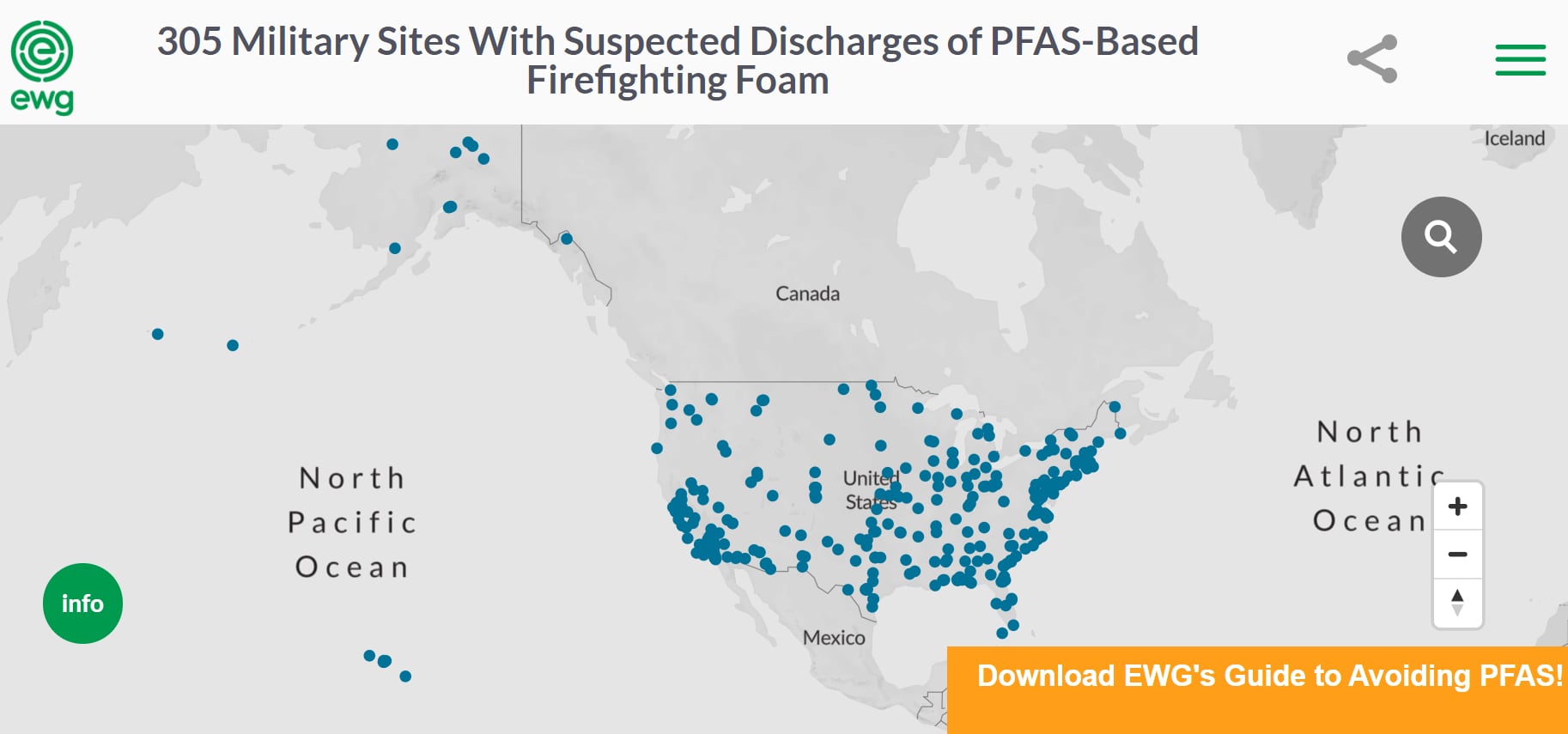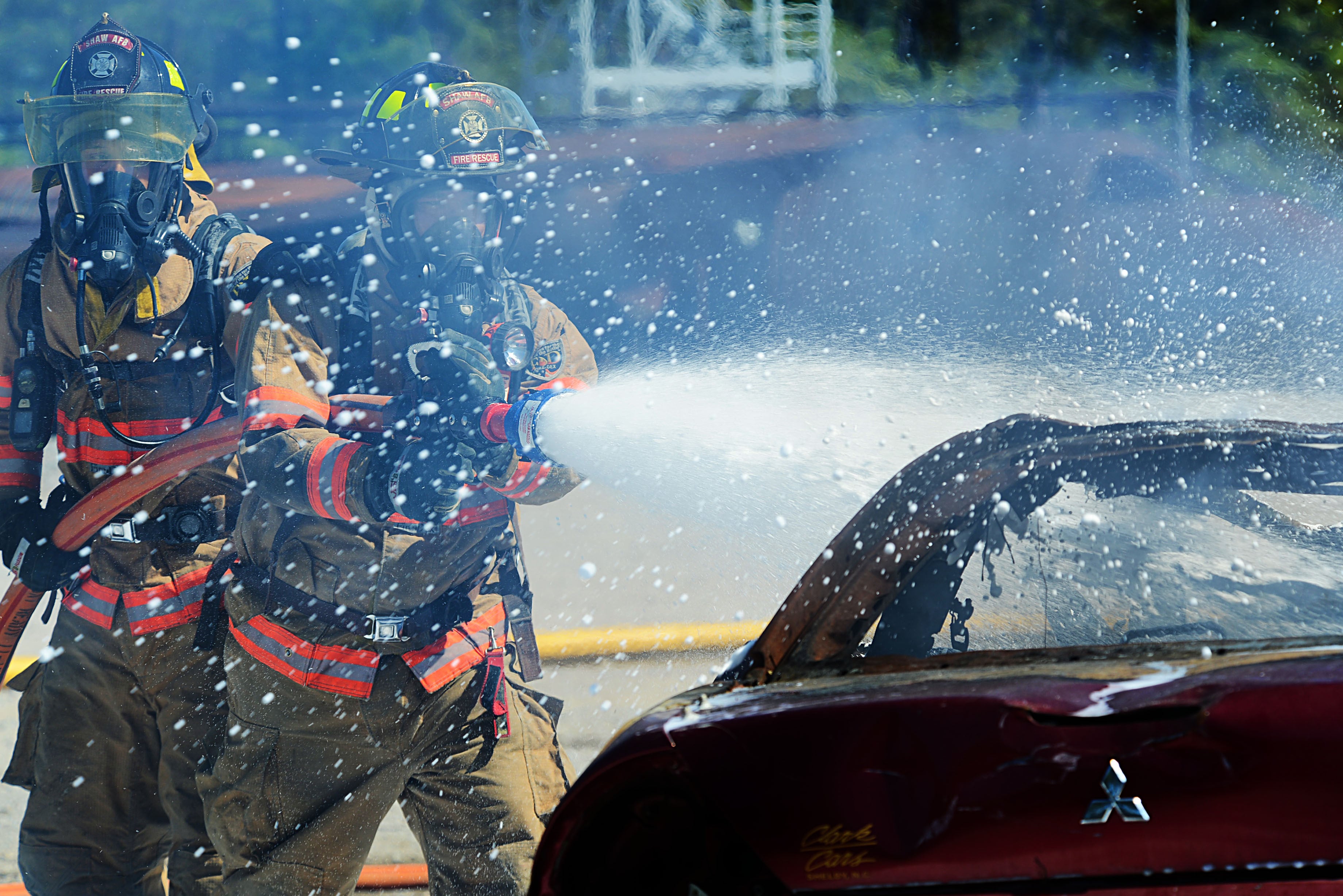Hundreds of military installations have either known or likely water contamination caused by runoff from firefighting foam used in response to vehicle and aircraft accidents, according to the Environmental Working Group.
Using Defense Department data, the organization built an interactive map of 305 sites, which are found in all 50 states. Each map dot opens up to information and links on perfluorooctane sulfonate or perfluorooctanoic acid, known as PFAS.
“Of these sites, 138 have not been previously identified on EWG’s map of known PFAS contamination at military bases, civilian airports and industrial sites,” according to a Tuesday new release. “In addition, 42 of these sites were not included on a list of 401 locations the Pentagon gave to Congress of active and former installations where PFAS contamination was known or suspected.”

The map went live the day after the House and Senate armed services committees finalized a compromise defense authorization bill for 2020, which includes provisions to approaching the PFAS issue going forward.
Expected to see a vote in the House on Wednesday, the law would prohibit the use of PFAS-laden firefighting foam after Oct. 1, 2024, and immediately ban any use of the foam outside of emergency situations.
RELATED

While the bill dropped a provision that would have brought PFAS-contaminated bases under the federal Superfund law, providing funding and a requirement to clean them up, the NDAA pushes the Pentagon to work with state governments to start clean up using funds from the Defense Environmental Remediation Account.
It would also require that military firefighters are testing for PFAS levels in their blood, as the chemicals do not break down over time and are known to build up in the human body.
In the mean time, the Air Force has been testing a system that might be able to remove PFAS from ground water, and DoD is funding research into a new firefighting foam.
Meghann Myers is the Pentagon bureau chief at Military Times. She covers operations, policy, personnel, leadership and other issues affecting service members.





